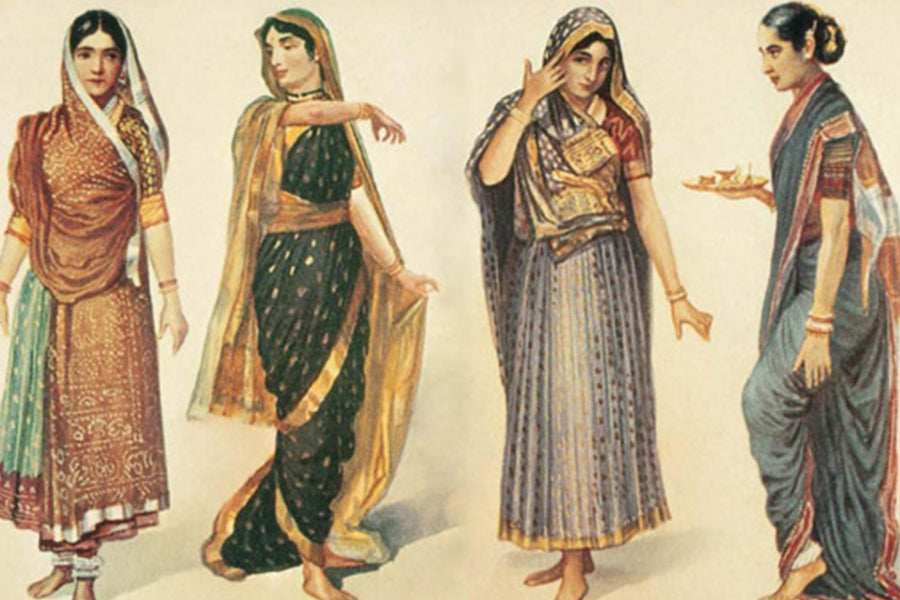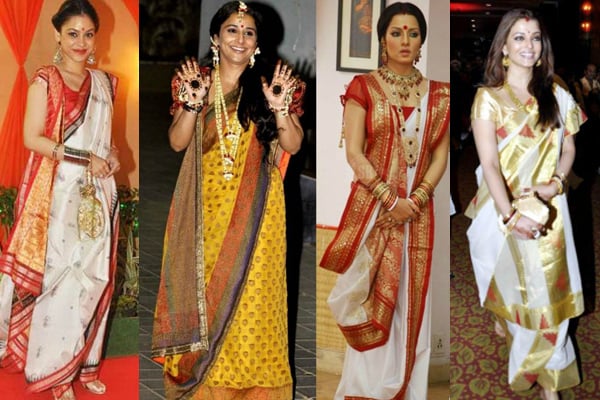The fervor of Navrathri (the Nine Days) or Dussehra – a nine day celebration excites Indians, especially the women, than any other festival. Observed predominantly by the Hindus in honour of Goddess Durga, each day people worship Durga Devi in different avatars, represented by different colours.
As the festive season approaches the Indian subcontinent, a wide assortment of rites and rituals are followed by the people of different states in many ways. Vibrant colors and zealous energies are all set for Navrathri, as it meant dressing up in colourful costumes, performing pooja and dancing.
The Symbolism of Colours for Each Navrathri Day
Each day of Navrathri or Dussehra is dedicated to different incarnations of Goddess Durga and has a symbolic color associated with it. Every day, the idol of Goddess Durga is decorated in different colours. The nine colours signifies the nine forms of Durga in her incarnations. The colours are Yellow, Green, Grey, Orange, White, Red, Royal Blue, Pink and Purple. And ladies follow these colors by wearing sarees or traditional dresses of the colour of the day, draping themselves in tradition. This is a scintillating picture of Incredible India.
Navratri festival also known as Sharada Navarathriis celebrated as per the lunar calendar. The occasion traditionally commences on Pratipada. This Navarathri, celebrate each day by wearing sarees of each colour specially curated by The S Studio!
Each color of Navrathri saree has a different significance

Day 1: Pratipada – September 21st – Yellow: This day Goddess Ashtamukhi is worshipped and is represented by yellow colour. Yellow is a happy and highly stimulating colour that spreads positivity.
Featured here: Yellow Soft Silk Saree

Day 2: Dwitiya – September 22nd – Green: Goddess Jagadamba is the avatar of Durga Devi, worshipped this day. Green represents harmony, fertility and is Mother Nature’s own colour
Featured here: Green Handloom Kanchipuram Silk

Day 3: Tritiya – September 23rd – Grey: Goddess Mahakali or Bhairavi is worshipped this day. Grey, the colour of the day, stands for sophistication and elegance
Featured here: Grey Organza Printed Saree

Day 4: Chaturthi – September 24th – Orange: The day represents Goddess Tara or Chamunda. The colour orange is associated with enthusiasm, and determination.
Featured here: Orange Kanchipuram Silk Cutwork Saree

Day 5: Panchami – September 25th – White: It represents Goddess Brahmacharini. White is the symbol of divinity, purity and it vanquishes darkness.
Featured here: White Soft Silk Kalamkari

Day 6: Sashti – September 26th –Red: This day represents Goddess Durga, her power and boldness- the power she demonstrated against evil. Colour red also stands for love and vigor.
Featured here: Red Printed Silk Saree

Day 7: Saptami – September 27th – Blue: This day is devoted to Goddess Renuka Devi, who is known as the “Mother of The Universe”. Blue stands for tranquility and depth of the ocean.
Featured here: Blue Kanchipuram Silk Saree

Day 8: Ashtami – September 28th – Pink: Pink represents Goddess Chinnamasta, who is symbolic of well-being, recreation, self realization and awakening.
Featured here: Pink Handloom Kanchipuram Silk Kalamkari

Day 9: Navami – September 29th – Purple: Purple represents Goddess Mahagauri who has the power to fulfill all the wishes of her devotees. Purple stands for pride and wealth.
Featured here: Purple Kanchipuram Silk
Day 10 Dasami- September 30th – Any bright Colour: Also known as Vijayadasami it signifies the victory of good over evil. This day is considered an auspicious start to all new things. On the final day people wear any bright and colourful clothing.
Sarees and other ethnic dresses are the most common colour oriented attires worn throughout Navrathri. Each color has a spiritual significance and so, people are more eager to incorporate them into their lives. Interestingly, the colors of the nine days change from year to year based on the day the festivities start. The first Navratri colour is decided based on the day when the festival begins (Ghatsthapna or Pratipada ) and for the rest of the week, a fixed cycle of colours is followed. Red, Orange, Yellow, Sky Blue, Pink, Grey, Green, purple and Royal blue are most common colors that associate to these days while parrot green, white, peacock green etc. are also found in some years.
There are many reasons that contribute to this vogue amongst women. It is a way to show their respect and faith and to connect to the almighty Goddess. It is a way to resonate in the tranquility of culture.
Navrathri traditions in different parts
In the southern state of Tamil nadu, the main part of the festival is assembling miniature figurines of Gods and Goddesses, known as Golu Dolls, following chantings, praising Goddesss Durga. Traditional tamboolams are offered to women.
The state of Maharashtra witnesses the best dressed up competition as well in support of the colors of Navrathri. This tradition is also famous in West Bengal where pooja pandals are decked up to worship Durga and Gujarat where dandiya dances are celebrated in a grand manner.
Excited for the week-long festivities? Well, you can check out for the colourful sarees in your closet to ensure that you are ready!
Worry not if you haven’t prepared yourself yet with the right colors of sarees to put on in the festivities all through the week. You can buy them online from The S Studio. Browse for the latest collection of Navrathri Sarees at https://www.thesstudioonline.com/sarees



